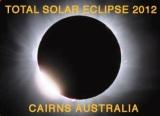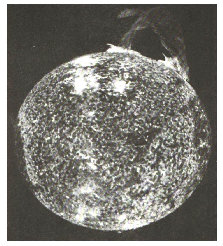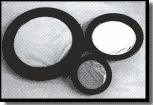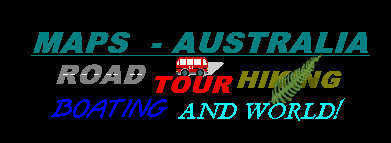TOTAL SOLAR ECLIPSE
CAIRNS AUSTRALIA 2012


Australian Residents Please Call (08) 8381 3188
International Residents Please Call 61+ 8 8381 3188
Mobile 0416 123 096


International Residents Please Call 61+ 8 8381 3188
Mobile 0416 123 096
Far North Queensland, Australia
November 14th 2012
November 14th 2012
- Getting up higher is better, and try to keep the East clear to see the actual eclipse, and the West clear, to see the oncoming shadow race towards you.
- Use Eclipse Glasses for observing the Eclipse
- Eclipse Glasses can be ordered for $4AUD Ph: 08 8381 3188
*Please note - Our Solar Eclipse Glasses are certified by European (CE) and Australian Standards.
The center line of Totality runs approxiamaetly through Oak Beach on the Captain Cook Highway, 51km or 53 mins from Cairns (without traffic).
A Partial Eclipse can be seen from all areas of Australia.
BASED IN ADELAIDE, SOUTH AUSTRALIA
- INFORMATION
- PRODUCTS
- SERVICES

Watch The Total Solar Eclipse LIVE via Web Sites
This will be updated as sites become availableFor a solar eclipse to occur, a 'New Moon' must be between us and the Sun. Normally, the Moon can only be seen because of the Sun reflecting off the Moon's surface. A New Moon cannot be usually seen because the Sun is somewhere behind it.

As the Sun is half covered, the sky changes to an unusual gun metal grey colour. The darkness in the western half of the sky is predominate. The Earth gives up its heat as it is no longer being heated by the Sun. This causes a slight breeze due to the air cooling faster than the Earth.


(Eastern Sky)
Just before totality, the Sun has many bright lights or beads near its edge. This is because of the mountains, hills and valleys around the edge of the Moon with the light shining between them. This is called "Baily's Beads". The last of the Baily Beads visible is called the Diamond Ring Effect (the last Baily Bead being the diamond and the corona of the Sun around the Moon being the ring). During a Total Solar Eclipse, the ring part of the Diamond Ring Effect may not be seen due to the Sun being totally covered.
Also, just before totality, better if you have a high vantage point, the Moon's shadow can be seen racing along the ground towards the observer from the direction of WSW (west by south west).
As the Diamond Ring disappears, this is called Second Contact.



- Get up high if you can.
- Know where WSW (west by south west) is for the Moons
shadow rapidly approaching.
- The Sun will be fairly low in the sky so make sure the western horizon is clear.
- Looking at the Sun even for a few seconds can cause irreversible damage.
- Using filters in the eyepiece are dangerous because the heat is concentrated on the eyepiece. One crack....
possible blindness.
- During totality, and only during totality, it is safe to view the eclipse with the unaided eye. Eyes should be immediately averted as the Diamond Ring Effect (first hint of Sun reappearing) appears once again.
Using a pinhole in a piece of cardboard so that the Sun's image can be projected through the pinhole onto the white cardboard.
The effect of an eclipse on tree leaves is fascinating. The small gaps in the trees allow light to get through and act as a pinhole projector (see above). The effect shows hundreds of little crescents, mimicking the eclipse, projected from the the image of the eclipse.
A welder's filter No. 12-14 can be used safely to view the eclipse. The safety of this has not been tested in a lab, although professionals are happy with the safety of the method. Cheaper and easier to buy a pair of Eclipse Glasses!
Solar Filter Caps which fit over the end of your telescope are available. Let us know your telescope diameter.
Solar projection onto a piece of cardboard or similar is a good way to view the Sun Spots and eclipse. If your using a large reflecting telescope only use a small hole to gather the light. A cheap eyepiece like Huygen (Hoi-gen) or Ramsden are best. They do not use glue to hold the lenses together inside the eyepiece (it will melt!). We have them available.
Remember to place a filter over the finderscope of your telescope or block it off all together to prevent eye damage from the curious wondering what your looking at. Also, the finderscope can cause a burn and in some plastic cases - melt!


http://www.mreclipse.com
Eclipse2012.org
http://eclipse2012.org.au/
Since photography is a complex and often difficult and you only get once chance to get it right, I've left it to the experts. Here is 'the' web site:
http://www.mreclipse.com/MrEclipse.html
http://www.iceinspace.com.au/63-371-0-0-1-0.html
Its unusual thing that the Sun being so far away and its immense size, compared to the Moon's relative closeness and small size, has the same diameter disc when observed by us.
Every now and then the Earth, Sun and Moon are almost exactly in line in space. When this occurs, either the Sun or Moon is eclipsed. A solar eclipse (eclipse of the Sun) occurs when the Moon moves directly into line between the Sun and the Earth. The circle of the Moon blocks out the Sun. If the Sun is completely covered, the Earth darkens and we call this a 'Total Eclipse of The Sun'. Its not very often this happens. Most eclipses have only part of the Sun covered and these are called 'Partial Eclipses'.
A Total Solar Eclipses can last up to around 7.5 minutes and the Moon's shadow which is cast upon us can be as wide as 285 kilometers in diameter. A Total Solar Eclipses give astronomers a chance to study the solar corona or outer atmosphere of the Sun which has jets, loops, or more commonly, prominences. The only other way this can be done is by a coronagraph, invented in the 1930's, which mimics an Total Solar Eclipse, removing the blinding glare of the Sun (photosphere).
Due to the fear caused by eclipses in primitive societies, records were kept of when they would occur. This was first done by the Babylonians. The regular cycle of eclipses was names 'Saros' by the Greeks and was found to be 18 years, 11 days and is caused by the Moon's eccentric motion round the Earth.
*Warning* Viewing the Sun without solar film will blind the observer. Solar Film and/or Dust Cap fitted with the Film must be attached properly to prevent the Film from coming free during observation.
The Sun's solar activity is at an all time high, after an unusually long period of being quiet. This active period produces fantastic Sunspots which can be viewed easily, and safely, through various optical instruments including Binoculars, Telescopes, Spotting Scopes, Cameras and Video Cameras (Cameras depending on their magnification capabilities).
It's not necessary to cover the whole end of the Telescope with Solar Film. Generally, the hole in the Dust Cap is large enough to cover with Film for solar viewing. Covering just the hole in the Dust Cap alters the Focal Ratio of the telescope greatly, and the Secondary Mirror (in Reflectors) is no longer an obstruction to the image. However, the size of the optics is now greatly reduced to the size of the Dust Cap hole. There are advantages to using a small hole, like in the Dust Cap (off-axis - ie. not in the centre), and also using the whole of the optics.
For more information on observing the Sun:
http://solar-center.stanford.edu/observe/
***WHEN VIEWING THE SUN THROUGH A TELESCOPE USING A SOLAR FILTER, ENSURE THE FINDERSCOPE IS COVERED OR HAS IT'S OWN FILTER***
BAADER SOLAR FILM
Baader Solar Film is made for the construction of high-quality Objective Filters for observing the Sun with telescopes, binoculars, camera or video lenses. This foil is CE-tested and reduces the intensity of sunlight by 99.999% (neutral density 5.0 or 3.8 Photographic).
Larger than 30cm x 30cm - $CALL
30cm x 30cm $55AUD
A4 Sheet - $45AUD
25cm x 25cm $40AUD
20cm x 20cm $35AUD
15cm x 15cm $20AUD
10cm x 10cm $12AUD
8cm x 8cm $8AUD
***WHEN VIEWING THE SUN THROUGH A TELESCOPE USING A SOLAR FILTER, ENSURE THE FINDERSCOPE IS COVERED OR HAS IT'S OWN FILTER***
R-G SOLAR FILM - 1000 OAKS OPTICAL
Designed with quality and cost in mind, R-G solar film provides a superior image of the sun that rivals Glass Solar Filters at a lower price. Unlike other solar filters, the R-G solar film will provide a more pleasing and natural Yellow- Orange image of the Sun our customers have come to know and love, through our Solar Glass Filter product line. The R-G film will also be available in sheets for those who like to make their own Solar Filters. Please email us for Safety and other information, or see it here:
http://www.thousandoaksoptical.com/www/Products/Solar%20filter.html
165mm x 165mm (6.5" x 6.5") $25AUD
210mm x 297mm (A4) $40AUD
***WHEN VIEWING THE SUN THROUGH A TELESCOPE USING A SOLAR FILTER, ENSURE THE FINDERSCOPE IS COVERED OR HAS IT'S OWN FILTER***
BLACK POLYMER SOLAR FILM - 1000 OAKS OPTICAL
A lower cost alternative where lower magnification is used such as with binoculars, camera filters, finder scopes and small telescopes. Stronger than Mylar with the filtering properties protected within the substrate. Guaranteed fifteen years. 300mm x 300mm $45AUD
***WHEN VIEWING THE SUN THROUGH A TELESCOPE USING A SOLAR FILTER, ENSURE THE FINDERSCOPE IS COVERED OR HAS IT'S OWN FILTER***
UPDATED SOLARSCOPE PRICELIST
http://www.telescopes-astronomy.com.au/solarscope-ltd-solar-filter-sun-observing-halpha.htm
SOLAR VIEWING WITH THE BAADER HERSHEL WEDGE
Baader Cool-Ceramic Safety Herschel Wedges in stock, the 2956500-V Visual version. Intended for refractors with 2” focusers, the Wedge gives the richest, most detailed white-light views of the sun available to the amateur for $540AUD or $612AUD for the Photographic version.
- It requires a 2” drawtube, and is not recommended on refractors that may have some internal relay lens as prolonged exposure to the sun may damage that lens.
- Heat build-up in the tube and on the ceramic plate was negligible during use.
- The supplied Solar Continuum filter brings out fine detail in the image, also makes the image a bright green.
- The Photographic version can be used visually, with the supplied ND filters used in place of the Continuum filter if desired.
http://www.baader-planetarium.com/pdf/herschel_wedge_e.pdf
MOUNTED SOLAR FILTER CAPS FOR TELESCOPES
Sun Filter to suit 60mm telescopes/binoculars $45AUD
Sun Filter to suit 70-90mm telescopes/binoculars $50AUD
Sun Filter to suit 114-120mm telescope/binoculars $60AUD
Sun Filter to suit 130mm telescopes $80AUD
Sun Filter to suit 150-158mm telescopes $95AUD
Larger available
Inexpensive 1" (25mm) or 1.25" Huygen eyepieces $25AUD
Welding Glass No. 12-14 $10AUD
THE SUNSPOTTER
Your whole class can now observe and follow the storms that play havoc with our tiny globe! Sunspotter gives your students the opportunity to track sunspots as they appear, move and vanish. A bright 3" (76mm) solar image is projected in all its glory by the powerful (2.5") 62mm diameter objective lens. Students can easily trace the face of the Sun and compare it from hour to hour and day to day. Easily aligned to the Sun in Seconds, the Sunspotter makes our closest star a subject of study by even the youngest students, without the complication of telescopes, solar filters and tripods.
This unique, wooden, folded Keplerian telescope provides a much safer and convenient way to view the brilliant light of the Sun compared to more common methods. By using a series of mirrors, the device projects an image of the Sun onto a white viewing screen. Unlike other ways of viewing the Sun, the compact and sturdy Sunspotter is convenient, easy to set up, lightweight and fun to use.
The Sunspotter is also a great way to view solar eclipses in complete safety.
Please inquire for more information and prices.



